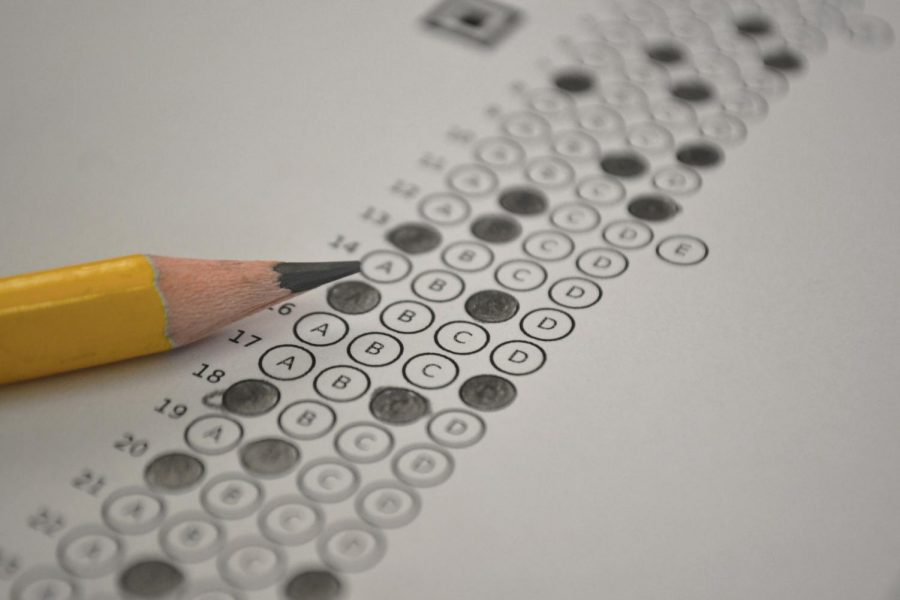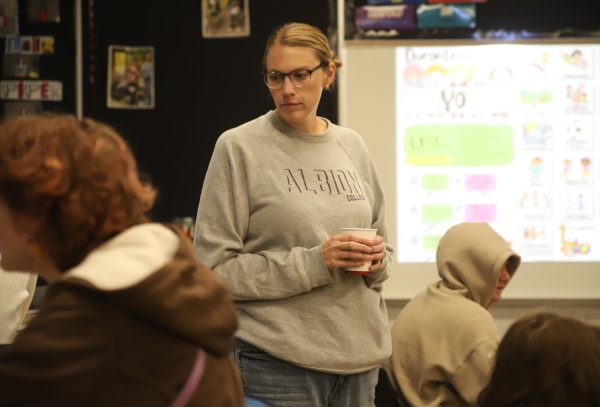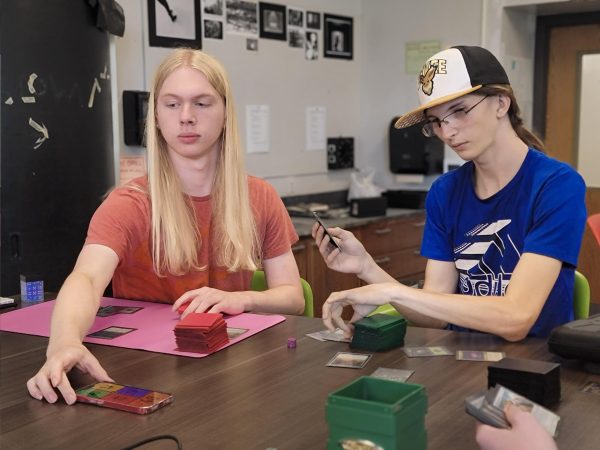Fake school no more
When Nic Grofsorean was entering the room of his SAT, he was intimidated. All the prep work and talks about the SAT made it seem as if it were the most important test of his life. He knew that it would affect his entry into some colleges, and because of it, he might not go to his dream school.
On Aug. 30, 2018, The Detroit Free Press released an article about high schools in the state of Michigan and the average SAT scores those schools received based on how their students performed. Community High School (CHS) — a school that is stereotypically not as rigorous as other Ann Arbor High Schools, according to students at Skyline High School — was ranked fourth in the state, with a score of 1234.7.
Even though the SAT is known for not being an adequate measure of students’ knowledge, as shown in a study conducted by The Washington Post, the SAT shows how different learning environments affect the way they learn in schools. According to Cherie Charbeneau, the coordinator for SAT’s at CHS, students who have performed well on the SAT have historically come from higher class families, where paying for extra SAT studying may not be as difficult as it is for other families. This presents an obvious disadvantage for students who can’t afford to do extra studying for the test. In addition to coming from lower-economic families where paying for SAT classes may be more of a financial burden, students that come from lower-economic families are at risk of not being able to test for learning barriers they have, so they may not be able to receive an individualized learning program because they never got tested for learning accommodations.
“Everybody’s brain works in a different way, and so I believe that 50 percent of my job is to assist students with accommodations,” Charbeneau said. “If the only people that get IEP’s or 504s are students whose parents can afford psychological or neurological testing, these same students will often be able to get extra SAT studying outside of what is provided at school. So living in an education-driven environment, such as Ann Arbor, is important for students to get more of a chance to do well on the SAT.”
When the SAT was redesigned in 2016, College Board, the company that owns the SAT, attempted to appeal to a wider audience, as well as become a more accurate reflection of what students learn in school. In doing this, College Board removed parts of the exam such as obscure vocabulary and punishing students for guessing on answers. Coupled with removing portions of the exam, they provided students with free test preparation materials provided through Khan Academy. While these changes assisted in giving more of an equal preparation for students around the country, research still shows that students that pay for test-prep services — some of which can cost up to 1,500 dollars — still perform marginally better on the test. In an environment where colleges want to accept the best students they can find, this still poses an unfair advantage for students who can afford to pay for extra preparation.
“It would not be truthful to say that your background and access to education does not have an impact on how you perform on the test,” CHS’s assistant dean Rebecca Westrate said. “We have additional programming here to make sure students are prepared for the test, and that the finances of a family don’t have as much of an impact on the student’s performance. Not everybody at CHS necessarily comes from a background that would suggest better scores would be a result, but we still have a very high level of success coming out of here.”
In addition to providing extra-assistance to accommodate all students, CHS practices a teaching environment where the classroom provides the opportunity for discussions. Instead of having classrooms where lectures dominate class time, CHS teaches students with a conversation driven approach. This allows students to come up with new ideas on topics and discuss how they relate to each other, and it cements previously learned topics in students heads by explaining concepts to their peers.
“I really love that teachers encourage conversation in the classroom, I think it’s a great way to engage students in a way that feels natural,” said Aris Chalin, a senior at CHS. “I believe that the conversational approach helps students to convey their ideas in a fuller way and that it could help students share more ideas.”
Since Community was founded in 1972, a factor that has made the school stand out as a unique school is that it strives for high academic success, while still creating an environment where creativity is encouraged. Teachers present concepts in their classrooms in a variety of ways, so that if a student doesn’t understand what the teacher is saying in a format, they’ll hear in a way that is comprehensive for them in a different format. This breaks down the barricade that students face of feeling like they’re looking at a wall of content they don’t understand. Furthermore, teachers look at what the SAT is testing on, and they adjust their classroom material to cover the material that will be presented on the SAT.
“We have a really amazing staff here at Community that helps keeps the kids motivated and do well in school, but I don’t think that’s the only thing that lets Community do well,” Westrate said. “Ann Arbor Public Schools (AAPS) as a whole does a really great job at giving kids in lower grades a good foundation to build off of. Because everything in the education system builds off of each other in some format, it’s really important that AAPS continues to do this.”
Even though the SAT has changed to accommodate for more people, the average SAT scores for students of color are 479 on the reading and writing portions and 462 on the mathematics section on the test. Compared to white students who on average earn 565 on the reading and writing portions of the SAT and 553 on the mathematics portions of the SAT, it is obvious there is still an unfair advantage. The SAT doesn’t show what students learn in school, and yet colleges still look at the SAT as one of the most important factors of getting into a school. Some schools — the majority of which are art schools — now require a portfolio of the student’s best work throughout high school, and look at the SAT as an un-standardized test. Schools that go the extra mile to make sure their students succeed on the test is an important step to making the SAT more standardized for all people.
“Community helped me take that test to the best of all my abilities,” Grofsorean said. “The amount of preparation and aid they made available was nearly limitless. But moreover was the ability for me to get extended time on the exam because I have an IEP for slow processing and without the extra time I would not have been able to complete the test which would have resulted in an effective fail. I owe everything I did on the SAT to the ILC department and Cherie.”

Atticus Dewey is a senior at Community High School and is more than excited to start his fourth year on The Communicator staff. This year, he is one of the four Print Editors-in-Chief, but believes that the entirety of the staff is more skilled than any other year prior.
His life outside of journalism is completely absorbed by one thing: water polo. While Atticus doesn't have any free-time because of it, he wouldn't have it any other way. While Atticus has felt stressed and like time has been flying by, he's grateful that he has three other wonderful editors to help him through the process.








